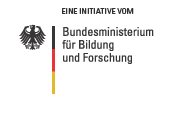Carsten Mehring: From physicist to expert on brain prostheses
-
 <ic:message key='Bild vergrößern' />
<ic:message key='Bild vergrößern' />
- Dr. Carsten Mehring Quelle: Mehring
05.03.2008 -
The idea of connecting machines directly to the human brain would seem to many like an idea straight out of science fiction. However, Carsten Mehring at the University of Freiburg is planning to do just this, and it’s no fiction, but cutting-edge science fact. The head of the "Computational Motor Control & Brain-machine Interfaces" working group is hoping to develop a prosthesis that can be controlled from the brain, thereby improving the operating ability for the most disabled patients. The 34-year-old prodigy has already managed to convince the jury from the GO-Bio competition, begun in 2006 by the German Federal Ministry for Education and Research (BMBF), of the potential of this project.
How is it possible to directly control a device using brain activity? The principle of neural prosthesis is based on the fact that nerve cells communicate via electrical signals. These signals can be deflected and measured using electrodes. During an "imaginary" movement made by a disabled patient, a specific spatio-temporal activity pattern can be observed in the brain. "Then it’s just a case of finding out which pattern belongs to which movement, and then teaching a computer to recognise these patterns," says Mehring. The computer can then respond with specific procedures, such as by moving an artificial hand. The neuroprotheses is complete when it is able to read the brain’s intentions. At least, so goes the theory.
GO-Bio awards: Carsten Mehring was one of the winners in the first round of the BMBF’s GO-Bio competition. In the autumn of 2006, German Minister Annette Schavan personally congratulated the winners. |
When scientists derive brain waves
In practice, the problems with this technology begin as soon as the brain waves are discharged. "There are basically three ways that we can approach this," says Mehring. The most accurate signal is obtained directly from the active nerve cells. However, placing an electrode in the brain is no trivial matter. Alternatively, the activity of a nerve cell population can also be measured outside the cranium. "Unfortunately, this approach is not unlike observing something through frosted glass," explains Mehring, outlining the disadvantages of this non-invasive technique. Therefore, the researcher and his team have chosen to pursue a semi-invasive approach. They are using electrodes that are laid directly on the surface of the brain - under both the cranium and the skin of the brain. "With this technique, the signal is much better, the brain is not harmed, and signal dissipation remains minimal if the electrodes move around a little," explains Mehring.
How can activity patterns be translated into movements?
One of the most critical aspects of the technology is assigning movements to specific activity patterns. In practice, it looks something like this: A subject who has been ‘fitted’ with electrodes performs a well-defined movement. Pattern recognition is judged to have succeeded when the scientists are able to trace the pattern to the movement. "Two-dimensional movements, e.g. from an arm, can be very well predicted," says Mehring. "Whether we will be ultimately able to gather enough information with this approach for a more precise movement of the fingers remains to be seen," he admits. Nonetheless, there exist viable solutions to these issues. The prosthesis can be equipped with a certain amount of artificial intelligence, so that when it is given a command by the brain, the exact details of a gripping movement, for example, can be independently calculated.
Career commences as a physicist
Mehring arrived at neurobiology via physics. "I would ideally have liked to do a scientific ‘Studium Generale’," says Mehring of the early stages of his studies. As there was no such option, he opted for physics, thereby tackling the fundamentals at an advanced level. "This subject really does open up a great many opportunities," says the researcher.
Even during his studies, neural networks were a fascinating subject for Mehring, although initially only in digital form. "Over time, I became much more interested in the fundamental neurobiological principles of these networks," he says. This led him to focus on the neuronal basics of the motoric system for his postdoctoral studies. It was at this time that he first came across brain-machine interfaces (BMI´s). That he would one day make important progress in this area was not something he could have imagined at the time. "My postdoctorate, and especially my subsequent scientific work, seems to have led me in this direction" says Mehring. His research on the basic neurobiological principles of the motoric system continues today. "We hope that ideas for new strategies for BMI’s will emerge from this work" says the researcher.
Mehring hopes to remain in sunny Freiburg, at least for the time being. "The chemistry between myself and my colleagues is just great, both scientifically and personally," he says. And although time spent working abroad can be tempting– he is reluctant to leave behind the fruits of his four-year work in Freiburg.
Author: Miriam Ruhenstroth




